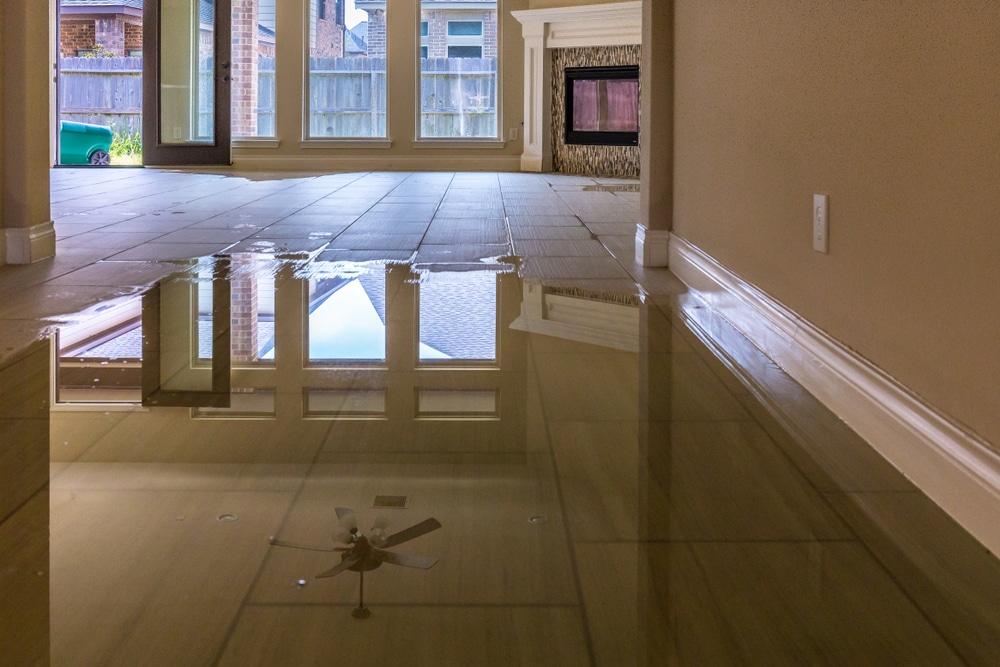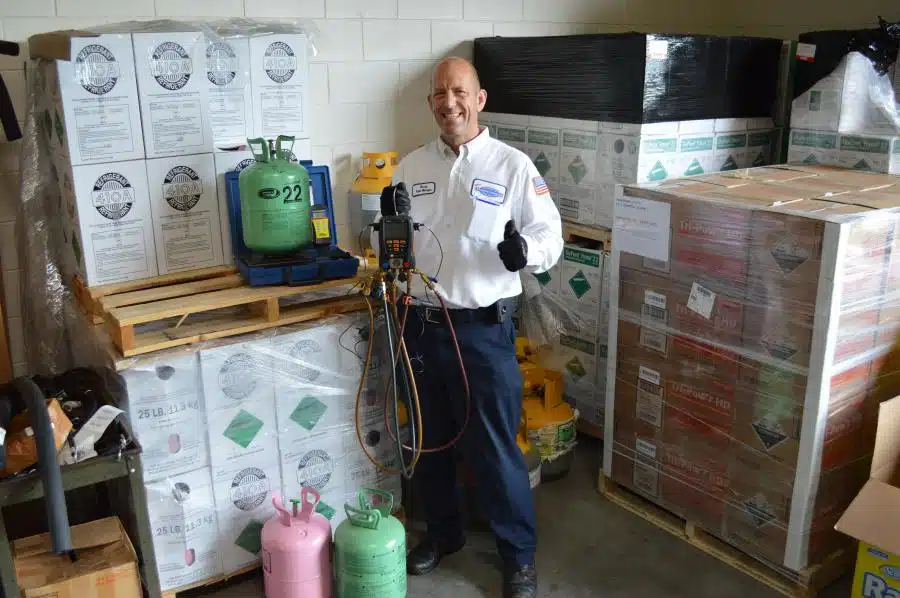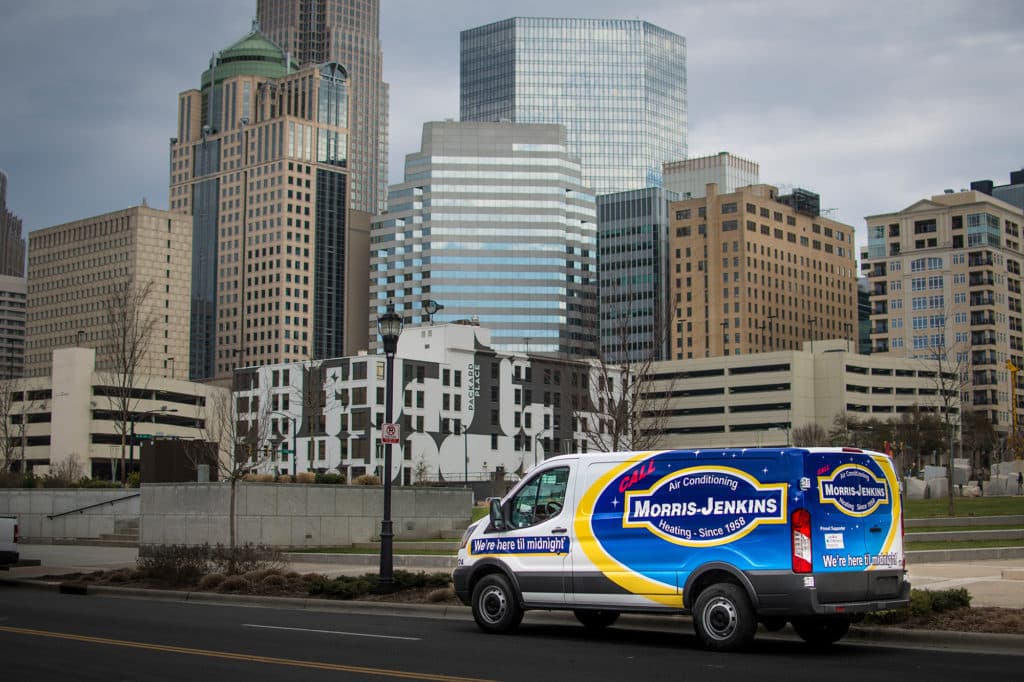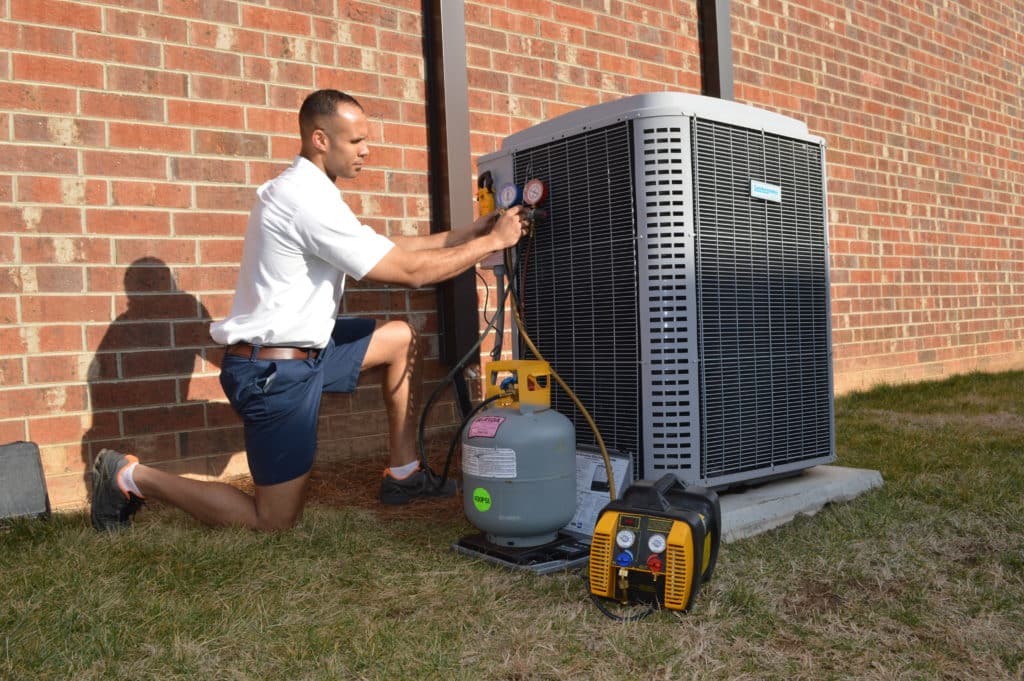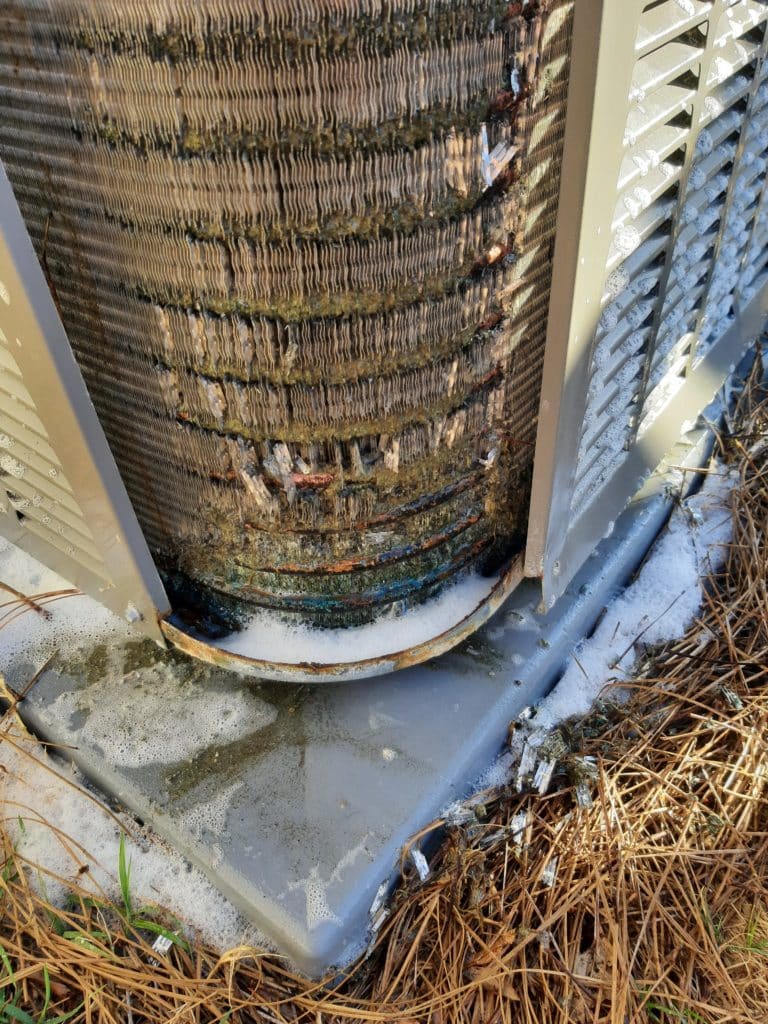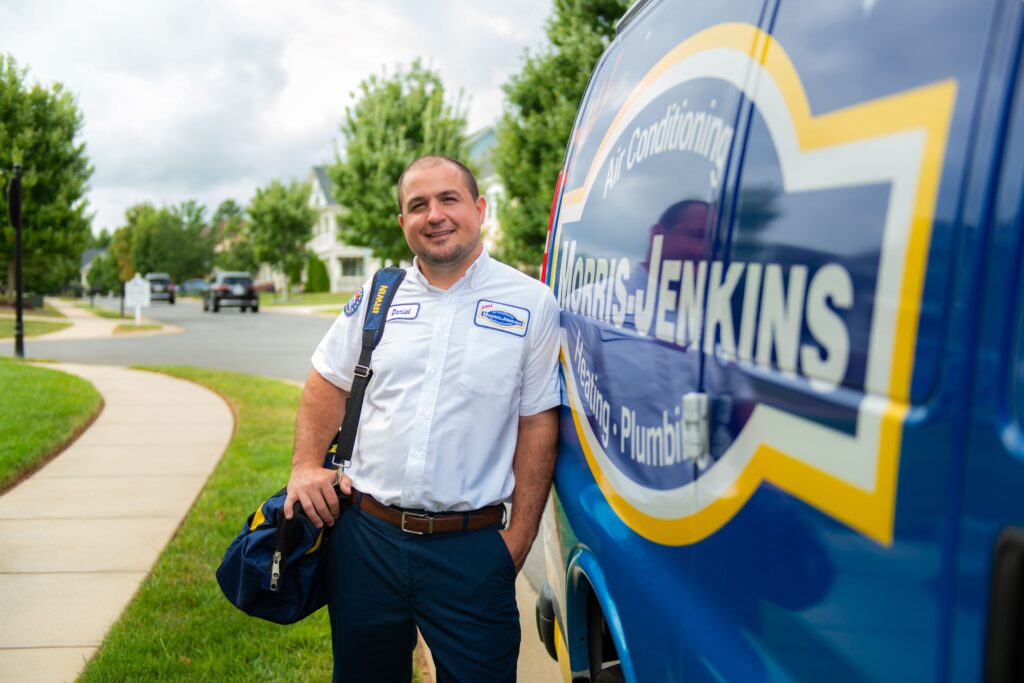You know the struggle. Early in the morning, it’s freezing cold outside, so you bundle up with your winter coat. By lunchtime, the sun is scorching and you’ve gotta go down to a short sleeve shirt. Welcome to the Carolinas! During the spring and fall, Mother Nature likes to keep you on your toes. When you’re at home, you wanna keep things consistent and comfortable, but that often means switching back and forth between air conditioning and heating. What does this mean for your unit? Is it bad to run the air conditioner and the furnace in the same day?
During this in-between of spring and fall, there are a few problems we get calls for that are the result of switching back and forth from heating to cooling: Moisture in your ductwork, “Dirty Sock Syndrome,” and compressor damage. Not only that, but if you have a heat pump, your high-pressure safety sensor might go off.
Avoid Problems from Switching Between Heating and AC
Before we dive into the details of what could go wrong, let’s talk about the main thing you can do to prevent these problems. When the temperature outside keeps bouncing between hot and cold, we recommend setting on your thermostat’s “Auto Changeover” feature (if it has one) and keeping the temperature range between 68-72 degrees. Auto changeover is a setting that allows your thermostat to decide when to switch from heating and cooling and vice versa. It keeps the temperature in a range that prevents damage from either temperature extreme!
Moisture in Your Ductwork
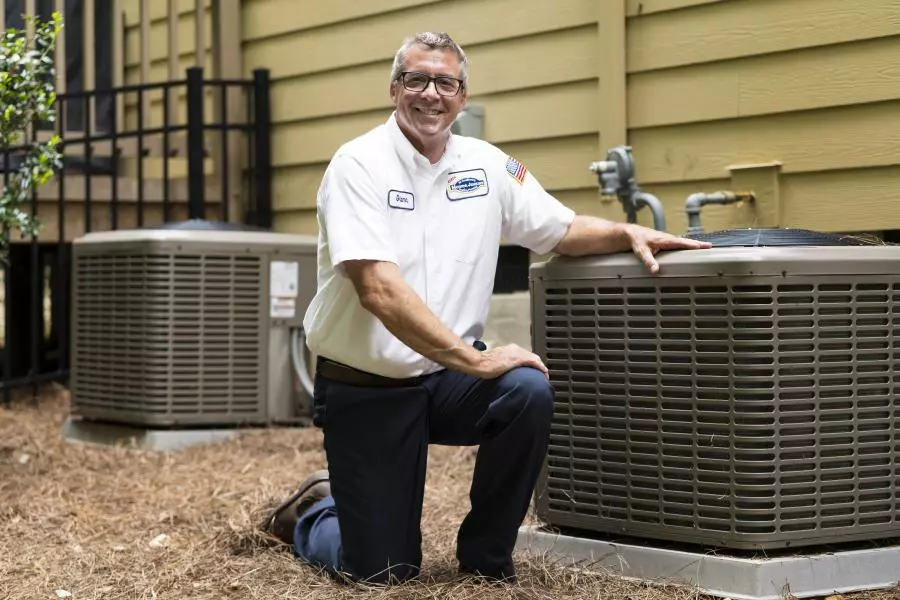
Do you know your air conditioner’s main job? It’s not just to cool your home! Actually, your air conditioner’s first job is to dehumidify your home. Dehumidifying, in turn, causes your home to cool down. In fact, the AC was invented for the sole purpose of dehumidification. In 1890, Willis Carrier was commissioned to dehumidify a print shop because, during the warmer months, the ink would never dry. In the process, people learned that dehumidifying cools the air!
While your A/C cools your home, it draws out about 12 to 18 gallons of water from the air per day. The humidity condenses on your evaporator coil. If you’re switching between heating and cooling, this moisture could cause problems. When your heat comes on later in the evening, it’ll push hot air across your evaporator coil, which is likely still wet from cooling your home earlier the same day. That hot air causes the water on the coil to evaporate, which gets humidity in your ductwork. This can make the area around your unit musty and humid, and it can even cause moisture to build up in your duct system!
Dirty Sock Syndrome
When was the last time you changed your air filters? You should be changing them every 30-60 days. No sure what kind of filter you should be using? We’ve got a blog to help you out!
Filters aren’t just there to keep your air clean—they’re there to keep your heating and cooling system clean! If you don’t change your filters often enough, dust and debris can start to collect on your unit, specifically your evaporator coil. When this happens, the dust and debris mix with the moisture on your coils we talked about earlier, allowing bacteria and mildew to build up. When your heat turns on and blows hot air across the coils, not only does water then evaporate, but mildew also bakes off, releasing a dirty sock smell throughout your home. Unfortunately, this is a really common problem. The best way to prevent Dirty Sock Syndrome?
Replace your filters regularly and remember to schedule your preventative maintenance.
How Switching Between Heating and Cooling Can Cause Damage to Your Compressor
Most thermostats have an automatic five-minute delay built into the electronics. Basically, when your AC shuts off, before switching over to heat, the compressor won’t restart for five minutes. It may seem annoying, but this is important! It allows your refrigerant to get back to its starting pressure. Start the unit too soon, and your compressor could lock up. This rest time helps protect your unit.
If your system does not have an automatic delay, you should manually shut your unit down from your thermostat for five minutes before switching between heating and cooling. This will help protect your compressor from damage.
What Happens if Your Air Conditioner Gets Too Cold?
During the spring and fall, it can be tricky to find the right temperature to balance the hot days and cold nights. When you set your cooling point too low and the overnight temperatures drop, your evaporator coil is more likely to freeze over. This can stop your AC from working, and it can damage the system! To avoid this, it’s best to keep your temperature at or above 70 degrees.
What Happens if Your Heating System Gets Too Hot?
If you have a heat pump and you leave your heat on during the warmer part of the day, it might trip your high-pressure safety sensor. Most of the time, this will auto-reset, but sometimes they don’t, so you’ll need to call out a professional to reset it. This is more of a problem for people who like to keep their home between 75 and 80 degrees all the time. If your home is that warm and the outside temperature is close to that same range, it can trigger the high-pressure sensor. Keep your temperature below 75 degrees to prevent this.
Related: “Why Some Rooms Are Colder (or Warmer) than the Rest”
What Temperature Should You Set Your Thermostat to?
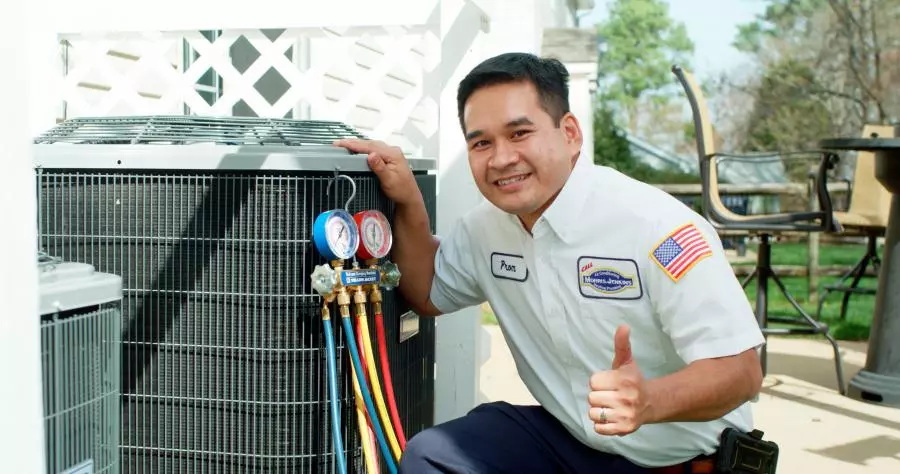
If you have an automatic setting on your thermostat to switch between heating and cooling, you have the ability to set a temperature range instead of a set temperature. When you have this setting on, don’t set heating and cooling to the exact same temperature—take advantage of the ability to set a range (preferably between 68-72 degrees). This gives your system some flexibility and room to adjust between heating and cooling throughout the day.
If you set your thermostat range for 68-72, your air conditioner will begin to cool your home if it gets above 72 degrees, and any time your home gets below 68, the heat will kick on. If you set your thermostat to a set temperature instead of a range or you set it at too close of a degree range, your heating and A/C will constantly be fighting each other to maintain an exact temperature and this can wear your unit out. Make sure you set your heating and cooling are at least a few degrees apart.
Recommended: “Not Sleeping Well? It Might Be the Temperature of Your Home”
Making it Through the In-Between Seasons
Whether you prefer colder or warmer weather, the Carolinas still make it tricky to find the right balance in your home when the afternoons are hot and the nights are cold. The key is to set your thermostat between 68 and 72 degrees to protect your unit as it switches back and forth between heating and cooling while keeping you comfortable at home! Wanna make sure both your heating and air conditioning are prepared for any weather thrown your way? Schedule your maintenance today!

